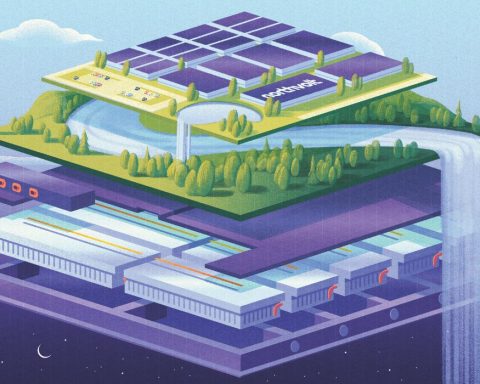Earlier this month, 200 people gathered at the sixth annual World Ethical Apparel Roundtable (WEAR) in Toronto to talk about fixing fashion. The sector, now valued at over a trillion dollars, has an image problem. Human rights abuses, landfill-clogging fast fashion and ocean-polluting microplastics are all tied to an industry that’s expected to triple in size by 2050. Textiles production emits more greenhouse gas than all international flights and maritime shipping put together. And consumer behaviour isn’t helping. We’re buying more clothes than ever, but we’re wearing them less and less.
What’s a brand to do? Think about clothes differently, for one. Enter the circular economy—a concept that puts systems, instead of trends, at its centre. WEAR’s keynote speaker, Francesca Brkic, oversees the Ellen MacArthur Foundation’s Make Fashion Circular initiative and part of her job is to show how a self-sustaining economy can generate growth and value while curbing greenhouse gas emissions and waste.
According to Brkic, the garment sector’s current take-make-waste model is deeply flawed. “Planned obsolescence informs most economic models,” she said at WEAR, “but it’s not compatible with finite resources.” 97% of clothes are made with virgin materials, including cotton and fossil fuel-derived synthetics, but at the end of their use 73% of those materials are either sent to landfills or incinerated.
Brkic and the Ellen MacArthur Foundation want to transform what that end of life looks like for a typical garment. Their solution is less about simply recycling and more about a design mindset that keeps durable products in use for longer. This summer the foundation launched a program to encourage millions of designers around the globe to “design out waste and pollution.” The foundation partnered with Gap Inc., H&M, Tommy Hilfiger and others to rethink the world’s most popular pant. Its Jeans Redesign initiative now helps retailers produce more durable, recyclable and traceable jeans. Case in point: Dutch company MUD Jeans’ Lease a Jeans program lets customers rent jeans (which happen to be made of high recycled and organic content) and then return them to be repaired, resold or recycled.
The industry’s newest and brightest ideas are putting circularity into practice. Rental, resale and refurbishment sites, like U.S.-based The RealReal and Rent the Runway or Reheart and Fitzroy in Canada, are part of the fastest growing categories in fashion. Even H&M is piloting a clothing rental service. Footwear giant Adidas just created the first mono material running shoe (due in stores in 2021) that’s 100% recyclable and made entirely of ocean plastic. Unlike Nike’s old shoe recycling program which turned used runners into basketball courts, Adidas’ design means old sneakers will be remade into new pairs in a closed loop when a customer is done with them.
In a breakout session on circular fashion, WEAR attendees put this kind of lifecycle thinking into practice. How could a product’s life be extended? How might it better serve a user’s needs? Asher Lichtman, who develops packaging for retailers at The Unique Group, said that the interest in sustainable systems has grown but that cost, and corporate will, are still impediments. “Sustainability comes up in every discussion we have. Is the system fixable? Of course. But are the major brands going to buy into the notion? And will they do their part to make sure it’s adhered to?”
Making sure brands adhere to waste-averting models is something more governments are looking into. In October, the EU Council requested a formal framework to move certain sectors, including textiles, to a circular economy. There’s no regulated producer responsibility for dealing with textile waste in Canada yet, but Kelly Drennan, executive director of Fashion Takes Action (the nonprofit organization behind WEAR) says they’re working on it via the Ontario Textile Diversion Collaborative. Update: Drennan has been appointed taskforce chair to develop a circular fashion standard for Canada through the CSA Group (formerly Canadian Standards Association).
To Brkic, fixing the system means creating products that benefit all stakeholders, not just end users. “You can’t safeguard the environment without safeguarding people,” she said, “they work hand in hand.” Improving the way a t-shirt is made also means improving the system in which it was created.
The industry’s reach, and its effects, are now too big to ignore. There are 80 billion new clothing items produced each year. They contribute an outsize amount to the climate and waste crisis. Clothes need not just one but multiple lives, with little or no impact at scale. The brands that give consumers that option will lead the way into 2020 and beyond.





